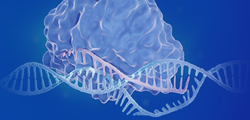-
REAGENT SERVICES
Hot!
-
Most Popular Services
-
Molecular Biology
-
Recombinant Antibody/Protein
-
Reagent Antibody
-
CRISPR Gene Editing
-
DNA Mutant Library
-
IVT RNA and LNP Formulations
-
Oligo Synthesis
-
Peptides
-
Cell Engineering
-
- Gene Synthesis FLASH Gene
- GenBrick™ Up to 200kb
- Gene Fragments Up to 3kb now
- Plasmid DNA Preparation Upgraded
- Cloning and Subcloning
- ORF cDNA Clones
- mRNA Plasmid Solutions New!
- Cell free mRNA Template New!
- AAV Plasmid Solutions New!
- Mutagenesis
- GenCircle™ Double-Stranded DNA New!
- GenSmart™ Online Tools
-
-
PRODUCTS
-
Most Popular Reagents
-
 Instruments
Instruments
-
Antibodies
-
ELISA Kits
-
Protein Electrophoresis and Blotting
-
Protein and Antibody Purification
-
Recombinant Proteins
-
Molecular Biology
-
Stable Cell Lines
-
Cell Isolation and Activation
-
 IVD Raw Materials
IVD Raw Materials
-
 Therapy Applications
Therapy Applications
-
Resources
-
- All Instruments
- Automated Protein and Antibody Purification SystemNew!
- Automated Plasmid MaxiprepHot!
- Automated Plasmid/Protein/Antibody Mini-scale Purification
- eBlot™ Protein Transfer System
- eStain™ Protein Staining System
- eZwest™ Lite Automated Western Blotting Device
- CytoSinct™ 1000 Cell Isolation Instrument
-
- Pharmacokinetics and Immunogenicity ELISA Kits
- Viral Titration QC ELISA Kits
- -- Lentivirus Titer p24 ELISA KitHot!
- -- MuLV Titer p30 ELISA KitNew!
- -- AAV2 and AAVX Titer Capsid ELISA Kits
- Residual Detection ELISA Kits
- -- T7 RNA Polymerase ELISA KitNew!
- -- BSA ELISA Kit, 2G
- -- Cas9 ELISA KitHot!
- -- Protein A ELISA KitHot!
- -- His tagged protein detection & purification
- dsRNA ELISA Kit
- Endonuclease ELISA Kit
- COVID-19 Detection cPass™ Technology Kits
-
- Automated Maxi-Plasmid PurificationHot!
- Automated Mini-Plasmid PurificationNew!
- PCR Reagents
- S.marcescens Nuclease Benz-Neburase™
- DNA Assembly GenBuilder™
- Cas9 / Cas12a / Cas13a Nucleases
- Base and Prime Editing Nucleases
- GMP Cas9 Nucleases
- CRISPR sgRNA Synthesis
- HDR Knock-in Template
- CRISPR Gene Editing Kits and Antibodies
-
![AmMag™ Quatro Automated Plasmid Purification]() AmMag™ Quatro automated plasmid purification
AmMag™ Quatro automated plasmid purification
-
![Anti-Camelid VHH]() MonoRab™ Anti-VHH Antibodies
MonoRab™ Anti-VHH Antibodies
-
![ELISA Kits]() ELISA Kits
ELISA Kits
-
![Precast Gels]() SurePAGE™ Precast Gels
SurePAGE™ Precast Gels
-
![Quatro ProAb Automated Protein and Antibody Purification System]() AmMag™ Quatro ProAb Automated Protein and Antibody Purification System
AmMag™ Quatro ProAb Automated Protein and Antibody Purification System
-
![Target Proteins]() Target Proteins
Target Proteins
-
![AmMag™ Quatro Automated Plasmid Purification]() AmMag™ Quatro automated plasmid purification
AmMag™ Quatro automated plasmid purification
-
![Stable Cell Lines]() Stable Cell Lines
Stable Cell Lines
-
![Cell Isolation and Activation]() Cell Isolation and Activation
Cell Isolation and Activation
-
 IVD Raw Materials
IVD Raw Materials
-
![Quick
Order]() Quick Order
Quick Order
-
![Quick
Order]() Quick Order
Quick Order
- APPLICATIONS
- RESOURCES
- ABOUT US
- SIGN IN My Account SIGN OUT
- REGISTER

![Amino Acid Code Amino Acid Code]()
DNA Related Biological Terms
This Biology terms dictionary provides query services for biology and biochemistry terms. Please enter the biology or biochemistry terms you want to search.
List by Alphabet: A B C D E F G H I J K L M N O P Q R S T U V W X Y Z
DNA Related Biological Terms:
A PCR-based method to obtain cDNA clones of rare transcripts which begin with only a partial internal sequence. The 3'- and 5'-ends are analysed separately; a single (-)-strand is first constructed from the 3'-end of the transcript by use of reverse transcriptase and a poly(dT) primer. The (+)-3'-end is then generated in multiple copies by PCR using poly(dA) and the known internal partial sequence as primers. A single (-)-strand copy is constructed from the 5'-end using reverse transcriptase with a (-)-primer based on the known internal sequence. This 5'-(-)-transcript is tailed with poly(dA) and then used as a template in a PCR with the known internal sequence and poly(dA) as primers. Once the 3'- and 5'-ends are known, primers can be constructed to produce multiple copies of the gene by PCR. (see also RecA-assisted restriction cleavage by endonuclease (RACE cleavage))Frohman, M.A. (1990) in PCR Protocols: Rapid amplification of cDNA Ends (Innis, M.A., Gelfand, D.H., Sninsky, J.J. and White, T.J., eds.), pp. 28-38, Academic Press, San Diego
DNA formed by bringing together DNA fragments from different species.
Sequences of DNA that are found to be repeated, sometimes thousands of times over.
Short repetitive DNA sequences that occur mainly at the ends or in the centre of chromosomes and are therefore suspected of serving structural roles; also, polynucleotides that are separable, on the basis of their characteristic density, from the bulk of nuclear DNA, and that have repetitive sequences.
The highly repetitive non-coding DNA of a satellite that serves a structural role in mitosis; used for genetic characterization by its polymorphism (simple sequence length polymorphism, SSLP).
The use, e.g. in forensic science, of a single variable number tandem repeat to characterize an individual's DNA.
DNA that does not yet have a recognized function. (see also junk DNA)
Single-stranded DNA.
A difference cloning method; a technique for comparison of two closely related cell types (e.g. a cell with a deletion mutation and the normal cell), and isolation from one (the tester) of DNA that is absent from the other (the driver). tester DNA is cleaved with a restriction nuclease that will allow its subsequent insertion into a cloning vector; an excess of driver DNA is randomly sheared. The two preparations are mixed, melted and annealed to form, among other species, duplexes composed of strands of the different sources (inter-resource duplex, IRD). The fraction of the annealed product, both strands of which were cleaved at restriction sites and which therefore is capable of being cloned, will be enriched in those sequences for which there was no competing randomly sheared driver DNA, i.e. those that are unique to the tester DNA, especially when annealing is terminated before an equilibrium is established (kinetic enrichment). The unique DNA sequences will therefore form a high proportion of the successfully cloned annealed DNA product. (see also magnet-assisted subtractive technique (MAST); subtractive hybridization)
Triple-stranded DNA in which the third oligonucleotide strand lies in the major groove of duplex DNA. It may also be a synthetic oligonucleotide with a sequence designed to target a specific sequence of a duplex; it can block transcription or, if it bears a covalently attached reactive group, it can cleave the duplex at a unique site. Moffat, A.S. (1991) Science 252, 1374-1375
-
Top Search
-
Hot Glossary
-
Molecular Biology
If you know of any terms that have been omitted from this glossary that you feel would be useful to include, please send detail to the Editorial Office at GenScript: website@genscript.com
If your term is adopted, we will send 1,000 EzCoupon points to your GenScript account.
-




































